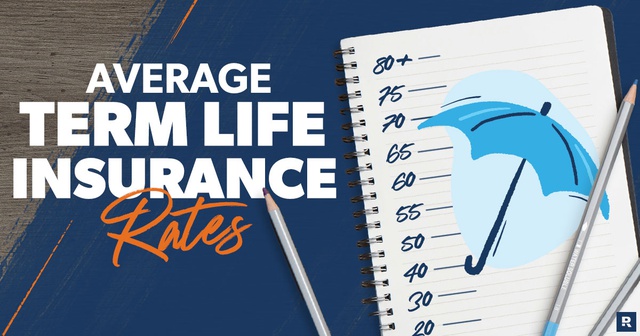Life insurance rates have reached a 20-year low, offering great opportunities for those seeking new policies or better rates. Understanding the reasons behind this drop can provide valuable insights into potential money-saving trends.
Toc

How are life insurance rates determined?
Life insurance rates are determined by a variety of factors, including:
However, the bulk of the decision is made up of three factors:
- Mortality rates
- Business expenses
- The ability of the company to earn interest through investments
Mortality rates
Most importantly, life insurance looks at the mortality rates of its customers. Although this may seem slightly morbid, it makes sense because you are buying something to protect your loved ones in case something bad happens to you.
Insurance companies use mortality tables in an attempt to predict your life expectancy before they sell you a policy. These tables are created with data relating to age, health habits (like smoking and exercise), your location, income level, and other personal information data points.
For each age, the mortality table has a death probability. Life insurance companies use the tables to determine life insurance rates that make sense for both the consumer and the company.
Business expenses
In addition to life expectancy projections, insurance companies also based their rates on their expenses. They need to keep their doors open, which includes paying out on policies, as well as paying on expenses like overhead, payroll, etc.
The company will calculate a rate that will allow them to make a reasonable profit from the policy while giving consumers a price they can afford (hopefully).
How much the company can earn
Finally, insurance companies take the interest they can earn on premiums and deposits into account. When you pay your premium, the company invests the cash in order to earn returns on it.
If they are able to earn more interest through their investments, they are also able to offer consumers lower rates on life insurance products.
Returns on investments can improve based on factors like internal company efficiencies like or overall market conditions, which in turn can provide more reasonable insurance rates for consumers.
2. https://viralblogspost.com/mmoga-car-insurance-quotes-pa
3. https://viralblogspost.com/commercial-property-insurance-guild-to-protecting-your-investment
4. https://viralblogspost.com/auto-insurance-quotes-arizona
5. https://viralblogspost.com/the-basics-of-insurance-understanding-the-different-types
Why have life insurance rates declined?
Regulation changes
Perhaps a large part of the equation has to do with recent changes in regulations that govern life insurance companies. The change deals mainly with reserve ratios, which is the amount of money that the company must have on hand to potentially pay out policies. Insurers are now allowed to have less money in their reserves.
Although that may sound riskier, it’s not. The new rules allow insurance companies to keep a more reasonable amount of cash on hand, instead of a larger amount of cash that they likely won’t need.
Insurance companies have collected a lot of data over the years on approximately how much cash they will need on hand and regulations have just now caught up. This lower requirement for reserve ratios allows insurance companies to manage their cash reserves better and invest the rest for optimal investing returns.
Longer lives
Thanks to medical advancements and a higher quality of life, people are living longer in this modern age. This allows life insurance companies to offer lower rates. If the probability that you’re going to die sooner in your life is lower, insurance companies will have less to pay out on policies than in times past.
Also, access to technological advancements like “big data,” artificial intelligence, and machine learning have helped insurance companies improve their predictions for life expectancies. This predictive algorithm can potentially better identify individuals with lower risks of premature death and, in turn, offer them lower rates.
Technology advancements
Finally, technology has helped to streamline the insurance underwriting process immensely. Instead of taking many man-hours to determine your rates and other policy details, advanced software applications can take care of the lengthy process.
Not only is the initial underwriting process much more efficient with the help of computer automation, so is the process for filing claims. This increased efficiency has allowed insurance companies to cut their costs and pass the savings along to their customers.
Tips to get good life insurance coverage
Think about your needs
Before you start looking for a life insurance policy, determine your needs.
It’s important to consider a few different factors like your current expenses, debts, and future big picture expenses. You might want to consider a future home purchase, your children’s education, your own debts, and anything else that you want to be covered in the case of untimely death.
You do not want to pay for a policy that is not actually helpful for your needs. For this reason, it’s good to have a pretty accurate idea of what your family needs in the next 10, 20, or 30 years.
Buy early
As with many forms of investments, it pays off to buy them early. You shouldn’t purchase a life insurance policy unless you need it but buying young and locking in a lower rate for a longer period of time could help garner a lower premium.
Use the ladder strategy
Instead of buying one large life insurance policy that covers all of your needs for the rest of your life, you may want to consider stacking smaller policies with a ladder coverage strategy.
Throughout your life, your expenses will grow as your family grows. During that expensive period of growth, you may want more coverage than later in life when your expenses dwindle. The ladder strategy can be a way to minimize the total cost of life insurance coverage.
You can stack policies with different term lengths to maximize your coverage while minimizing the cost. One way to use the ladder strategy is to buy overlapping policies that end at separate times.
The drawback to the ladder strategy is that it may take some time to determine the right timing of your coverage. However, the strategy could potentially save you thousands of dollars, so it is worth investing some time into this slightly more advanced strategy.
Get healthy
Life insurance companies consider your overall health in the underwriting process. If you lead an unhealthy lifestyle, then it’s likely that your rates will be higher. Life insurance will consider factors such as obesity, smoking, and healthy issues like high blood pressure and diabetes when it comes to pricing your policy premiums as well.
Try improving your lifestyle, one small step at a time. Knowing that you might save money on your policy might be just the motivation you need to kick a bad habit.
Shop around
When you are signing up for a policy, don’t just look at one company. Different companies will give you different rates and premiums for their estimates. It might take a little bit of time, but you should get quotes from multiple companies to find the best price for the best coverage.
Shopping around has become easier with the advent of companies that search the marketplace for the best insurance available. Lately we’ve been most impressed with Policygenius, and we’ve partnered with them to provide a simple way of finding the best life insurance rates all in one place. You just fill out their simple online form and they’ll shop around for you, so you don’t need to visit each individual provider to find the best rates available.
You can read our full Policygenius review here.
You should also check out Bestow. They only offer term life insurance, but that’s often what most people choose. You can complete their online application in just a few minutes, plus you won’t need to take a medical exam to submit your application.
You can also check out the top life insurance providers operating in your area.
Summary
Life insurance is a good investment. It will help to protect your loved ones just in case something happens to you. At the very least, it offers you some peace of mind.
Now is a great time to buy life insurance because rates are low. If you can get a good deal, then go for it. With life insurance, there’s definitely no time like the present to get going.






